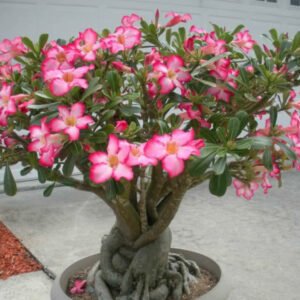Description
Stems to 3 m tall, with sheaths (6) 8–20 (25) mm in diam., without (3) 4–15 mm. Costapalmate, Leaf sheath often with coarse, flattened outer immature fibers obscuring finer inner ones producing a diagonallined mesh, mature inner and outer fibers of similar thickness producing a squared open, often fine mesh, ligule sometimes remaining intact at maturity; petiole to 0.9–3 mm wide, often bearing minute brown papillae along the margin, sometimes only at the base or apex; blade with Vshaped or semi-circular outline, variable in size, sometimes with a conspicuous palman, segments 2–11, folds 7–25, to 380 mm long, sides curved, apices sometimes cucculate, oblique, sometimes truncate, with dentate secondary splitting, primary splits to within 1.5–168 mm of the blade base, brown papillae along the ribs, mostly adaxially and at the base, rather thin-textured, abaxial and adaxial surfaces similar in colour, pale green, transverse veinlets very conspicuous. Inflorescence, the male and female similar in general appearance, branching to 1 or 2 orders; peduncle relatively long, to 220 mm, glabrous; prophyll tubular, overlapping the first rachis bract, relatively thin-textured, pale-brown to reddish-brown, inner surface usually dull, occasionally shiny (Thorell 30599), outer surfaces dull, mostly glabrous, tomentose sometimes on edges and keels; rachis bracts 1–2, similar in appearance to the prophyll, overlapping the base of the next bract; rachis overall length 65–280 (340) mm, about 2.3 mm in diam., increasing up to 4 mm; rachillae few, to 34–238 mm long, 0.5–1.6 mm in diam., male rachillae shorter than female, glabrous, pale brown. Flowers, relatively well spaced on the rachillae, large, coriaceous. Male flowers ovoid to 6.1 × 4.0 mm; calyx to 2.5 mm, lobes to 0.7mm with irregular margin, sometimes darkly pigmented; corolla marked with faint vertical lines of darker pigment, with acute lobes, narrowed into a receptacularstalk to 1.8 mm; filaments, shorter row to 1.5 mm, longer row to 2.0 mm, broad, to 0.5 mm in diam., keeled; pistillode present. Female flowers, cylindrical to 5.5 × 3.2 mm, often conspicuously banded; calyx to 2.2 mm with a pale basal rim, lobes to 0.9 mm with a dark, irregular margin; corolla with vertical markings sometimes less distinct than in the male, with acute triangular, black or black-based beak like lobes, with a receptacular-stalk to 2 mm, 3 carpels developing; staminodes present. Fruit to 9.5 × 9.5 mm, 1–3 borne on a short receptacular-stalk to 2 mm, epicarp shiny translucent, minutely papillose, with conspicuous black lenticels. (L. Hastings. 2003)/Palmweb. Editing by edric.
Culture
Culture for R. subtilis is fairly similar to R. excelsa except that R. subtilis is tropical in its requirements. Cold weather may damage foliage particularly if the cold persists for a long time. The plants require shade and under shelter will not be damaged by cold nights even down to about -4° C. R. subtilis also requires more regular watering than R. excelsa, water so that the soil is moist but not wet. Even with plenty of water the plants may still suffer from burnt leaf tips especially when grown in containers. This palm suffers from one pest that does not affect R. excelsa, and that is spider mite, especially on plants that are grown indoors in warm dry atmospheres. Spider mite can be easily controlled by regularly spraying upper and lower leaf surfaces with soapy water or if you want quicker results thoroughly spray foliage with a miticide such as Kelthane, Dimethoate or similar and it is necessary to alternate miticides since mites are notorious for building up resistance to one chemical.
Delivery: With in one day
Any questions, feel free contact us:







Reviews
There are no reviews yet.